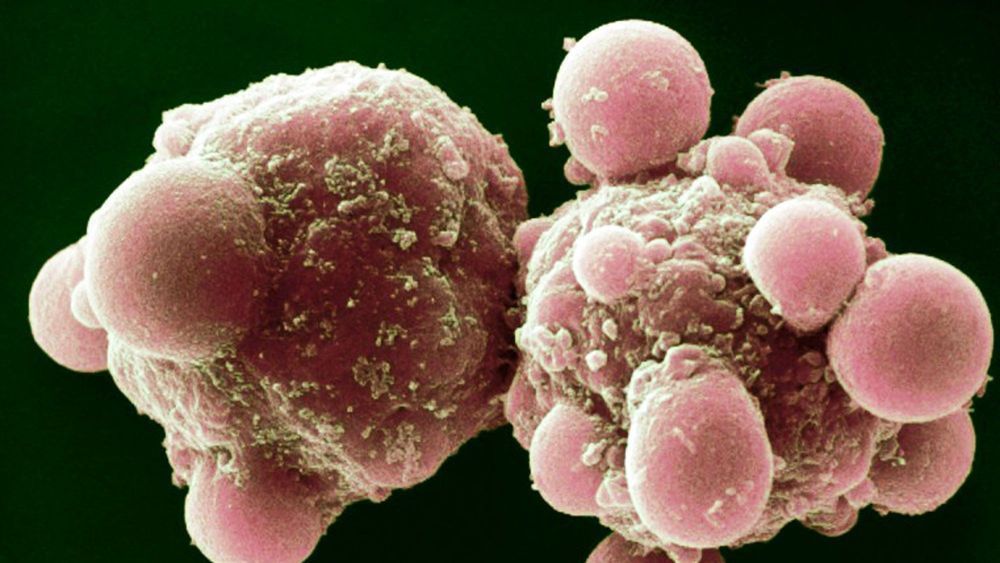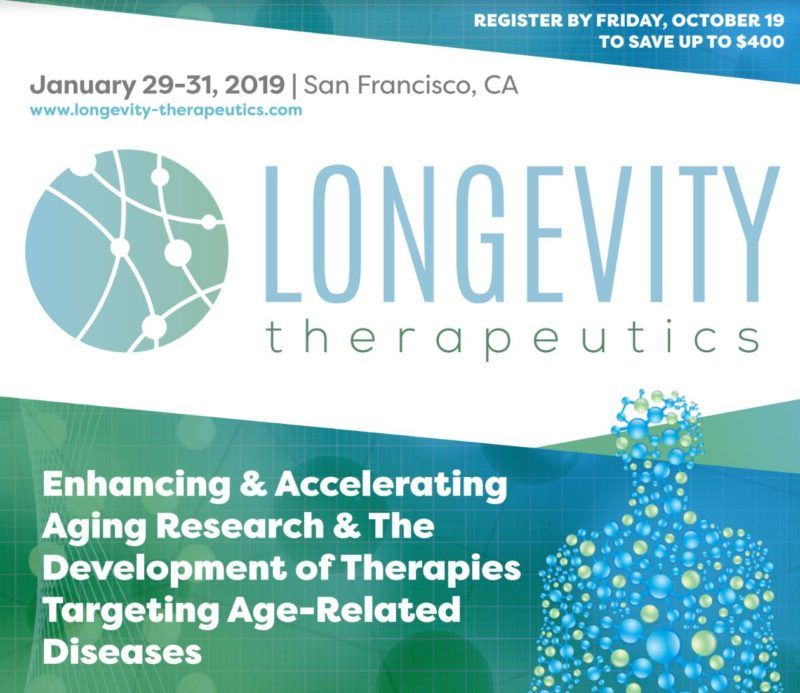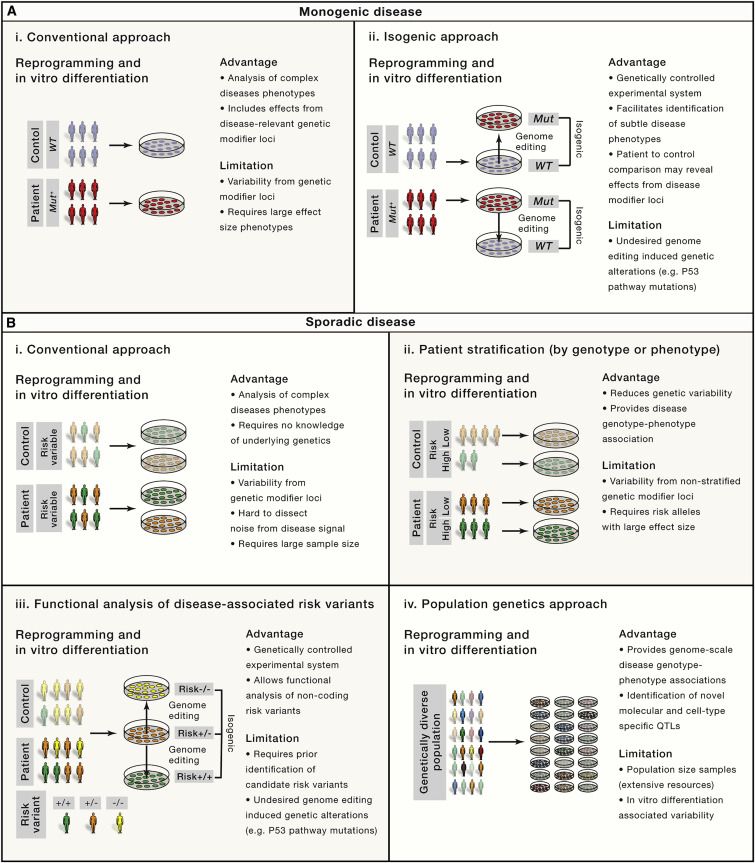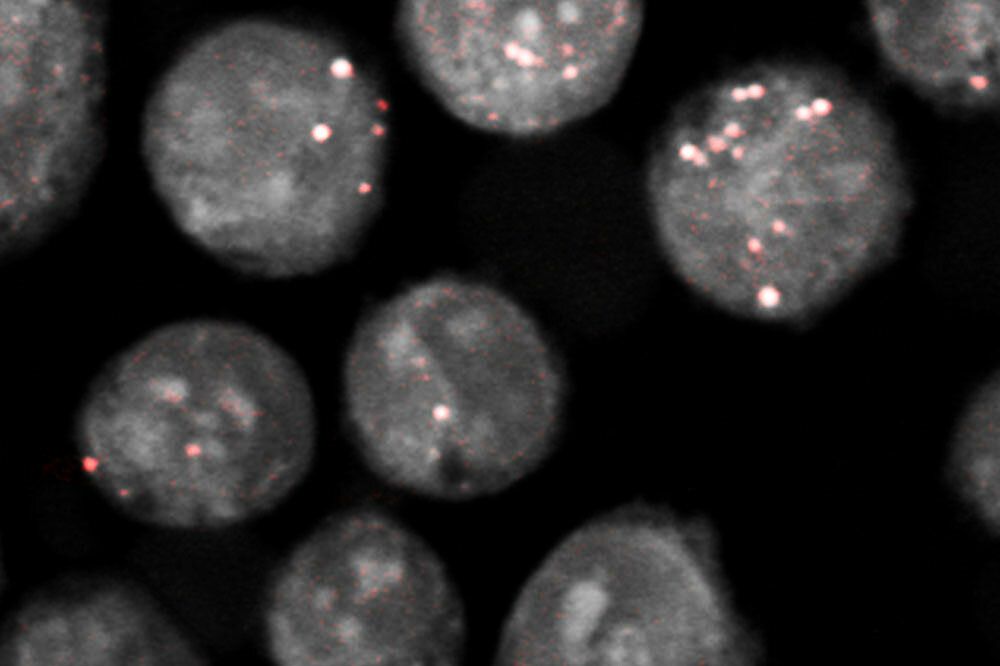Are tired-out cells what make people old? A new generation of drugs is designed to wipe them out.



The Longevity Therapeutics Summit was focused on therapeutics that target aging, rather than basic research or theory.
This was the first year for the Longevity Therapeutics Summit in San Francisco, California. Ably organized by Hanson Wade, with John Lewis, CEO of Oisín Biotechnologies, as program chair, the conference focused on senolytics for senescent cell clearance, big data and AI in finding new drugs (“in silico” testing), delivery systems for therapeutics like senolytics, TORC1 drugs, and biomarkers of aging, and the challenges of clinical trial development and FDA approval.
The conference featured a smorgasbord of cutting-edge longevity research, and, as the name implies, the general focus was on therapeutics that target aging, rather than basic research or theory.
Ned David, CEO of Unity Biotechnology, kicked off the conference with a talk about the company’s latest research on senolytics, which clear away senescent (“zombie”) cells, which secrete harmful chemicals that can cause neighboring cells to also become senescent. Unity has made the news recently with an extension request for its clinical trial of its first-in-class senolytics for osteoarthritis. Its preliminary Phase 1 clinical trial results were deemed “safe,” a major step in obtaining FDA approval, and the full results will be available later this year or in 2020.

The derivation of human embryonic stem cells (hESCs) and the stunning discovery that somatic cells can be reprogrammed into human induced pluripotent stem cells (hiPSCs) holds the promise to revolutionize biomedical research and regenerative medicine. In this Review, we focus on disorders of the central nervous system and explore how advances in human pluripotent stem cells (hPSCs) coincide with evolutions in genome engineering and genomic technologies to provide realistic opportunities to tackle some of the most devastating complex disorders.
Advances in stem cell biology are paving new paths toward their use in the clinic, especially toward understanding and treating neurological and neurodegenerative disease.

Cancer cells are, in some respects, impressive: They can grow relentlessly, sidestep the aging process by becoming immortal, and evade the immune system’s persistent attacks. But in the process of acquiring such superpowers, the cells must occasionally relinquish other, more mundane skills—including the ability to produce certain nutrients.
Researchers at The Rockefeller University now announce the discovery of a rare tumor type that is unable to synthesize cholesterol, a molecule without which cells can’t survive.
“These cells become dependent on taking up cholesterol from their environment, and we can use this dependency to design therapies that block cholesterol uptake,” says Kivanç Birsoy, the Chapman Perelman Assistant Professor, who reports the findings in Nature.

Over the course of three weeks, the patients took nine doses of a leukemia drug called dasatinib and quercetin, a supplement. By the end of the trial, the patients were reportedly able to walk farther than they could previously in the same amount of time and other signs of improved well being — all without any serious side effects.
“Though small, this pilot study marks a major breakthrough in how we treat age-related diseases such as IPF,” researcher Jamie Justice said in a press release. “Here, we’ve therapeutically targeted a fundamental biological hallmark of aging that is implicated in IPF, and we show early but promising results for the first time in human patients.”
Be excited! Technology is rapidly advancing to eliminate age related sickness and death.
Imagine a world where aging will be reversed and people can remain young and in good health. Dr. Aubrey de Gray and others are working on therapies in making this a reality.
Aging is a disease and they are working on the cure.
If a 60 year old takes these damage repair therapies, they become biologically 30 years old again and in good health.
Old age and death are a thing of the past.
Let your thoughts and prayers be with Aubrey and the scientists working on longevity research. Know that they will be successful. Age reversal and damage repair therapies will be available for the public to use within 20 years. Technology is rapidly advancing.


Researchers at the Harvard T.H. Chan School of Public Health have discovered a new aging clock that can accurately determine both chronological and biological age in a wide variety of species.
Aging and the nucleolus
There are two kinds of age: chronological age, which is strictly the number of years that something has lived, and biological age, which is influenced by diet, exercise, environment, and similar factors. Biological age is the superior measure of true age and is an accurate predictor of all-cause mortality.

These molecules not only rapidly improve symptoms, but remarkably, also appear to renew the underlying brain impairments causing memory loss in preclinical models.
“Currently there are no medications to treat cognitive symptoms such as memory loss that occur in depression, other mental illnesses and aging,” says Dr. Etienne Sibille, Deputy Director of the Campbell Family Mental Health Research Institute at CAMH and lead scientist on the study.
What’s unique and promising about these findings, in the face of many failures in drug development for mental illness, is that the compounds are highly targeted to activate the impaired brain receptors that are causing memory loss, he says.
